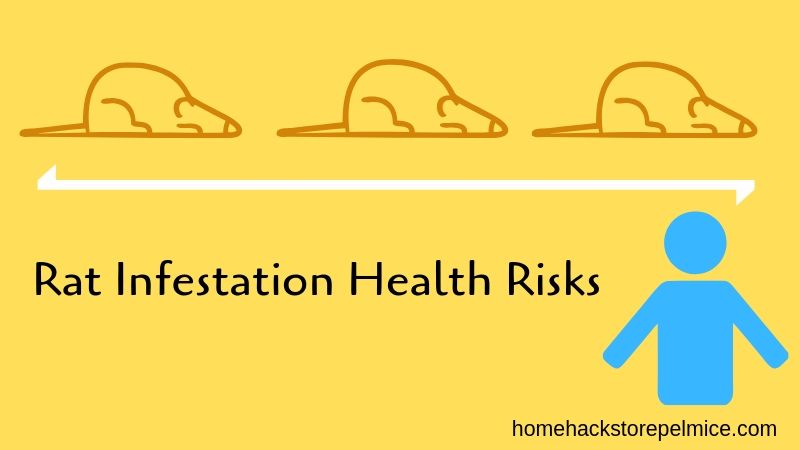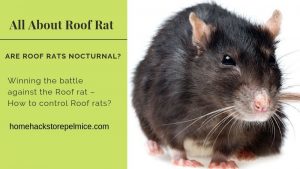Do you sense rat infestation in your house? Are you constantly bothered by the presence of breeding rodents in your house?
There is no doubt that keeping your house free from mice can be an inordinately challenging task, especially during winters, when rodents seek shelter in warm places, often invading homes through tiny cracks and crevices. Nonetheless, it is gravely concerning as rodents such as rats can spread over 35 hazardous diseases and cause serious damage to your health concomitantly.
In this article, we will discuss the health risks associated with rat infestation and the various diseases carried by rodent droppings so that you can take the necessary measures to keep rodents out of your place of residence.
Why Is Rat Infestation Considered Dangerous?
Since ancient times, rats have been considered as the main transmitters of contagious diseases and carriers of fleas. Speaking of rodent infestation, rats living alongside humans can be a real nuisance for homeowners. The accumulation of rodent feces can proliferate bacteria and contaminate food sources, thereby posing serious health risks to both humans as well as animals at the same time. Keeping that aside, they render eatables inedible and increase spoilage.
Besides, many times, the transmission of diseases from mice can be fatal in human beings. The fact that rodents inhabit dirty and unsanitary areas itself implies the health risks which result from rat infestation. In addition to lethal infections, rats may also carry organisms such as parasites and virus which can have a negative impact, specifically on the health of men.
Rat infestation is a big threat to your health and property simultaneously. Irrespective of their diminutive size, rats can cause serious structural damage, thereby leading to property issues such as fires and floods. On this account, by getting rid of rat infestation, you can save your property from getting damaged while significantly reducing the chances of getting sick from mouse droppings.
Rodents, just like any other animal that has teeth, attack whenever they feel threatened. Nevertheless, a mouse bite is not that painful but it can lead to a host of severe problems as rats are common carriers of harmful parasites.
What Hazardous Diseases Do Rats Carry?
Now that you are acquainted with the serious health risks posed by mice infestation, let’s proceed and discuss the most common diseases caused by rat droppings.
1.Hantavirus
Hantavirus is a debilitating disease communicated to humans by hantavirus carriers such as the white-footed deer mouse and rice cat. People get the disease through inhalation or exposure to infected mice urine, droppings, and resting materials. Furthermore, if an infected mouse bites someone, there is a very high possibility that the virus may be contagious enough to spread to that individual.
Naturally, the early symptoms of hantavirus in humans develop between a time period of 1-5 weeks. The symptoms include fever, lethargy, and muscle aches in various parts of the body such as the shoulders, buttocks, back, and thighs. Other than that, a person who has been infected is quite likely to experience nausea, abdominal pain, diarrhea, headaches, chills, and light-headedness.
If left untreated, late hantavirus symptoms such as coughing and shortness of breath may occur causing the infection to progress to HPS, a life-threatening respiratory ailment that has a mortality rate of thirty-eight percent. As of now, there is no specific hantavirus cure, vaccine, or treatment. Nonetheless, if the ailment is recognized early and the infected individual receives proper medical care, he/she may show signs of improvement.
2. Lymphocytic choriomeningitis (LCM)
LCM is amongst the most infectious rat borne diseases and it is caused by a virus known as LCMV. The primary carrier of this virus is the most commonly found ‘house mouse’. This disease can be transmitted to humans after direct exposure to droppings, saliva, nesting materials, or mice urine, especially during the colder months, when rodents look for warm habitats and seek shelter indoors.
Additionally, the spread of LCM disease may also occur if these materials come in direct contact with broken skin, eyes, mouth, nose, or seemingly, through an infected rodent bite. The ailment can be classified into two distinct phases. Speaking of the first phase, the infection causes symptoms such as malaise, decreased appetite, nausea, fever, testicular pain, sore throat, and muscle aches.
However, in the second phase, the disease progresses into a neurological illness with symptoms like stiffness in the neck, bafflement, sensory interruptions, drowsiness, and motor abnormalities. As an illness of the Central Nervous System (CNS), the LCM disease may lead to temporary or permanent neurological damage, but at the same time, it is non-fatal in most human beings.
The risk is even greater for women who get infected during pregnancy as there is a very high chance that they may pass the disease to the fetus. In the 1st trimester of pregnancy, the LCM infection may cause pregnancy termination and fetal death. Whereas in the 2nd and 3rd trimester, the infection may result in severe birth defects such as vision issues and mental retardation.
Nevertheless, apart from a fetal infection, the disease is not lethal with a mortality rate of less than one percent. Albeit the illness is self-limiting, in certain cases, the patient might require supportive treatment with anti-inflammatory medicines and hospitalization based on the extremity of the infection.
3. Plague
During the middle ages in the European countries, millions of people were killed by the so-called infamous plague which was supposedly caused by rats. Being one of the most fatal diseases carried by rodent droppings, plague affects both humans and mammals concurrently.
Making physical contact with an infected animal or getting a mouse bite are the most common ways through which plague is transmitted to human beings. As of now, there are a number of rural and semi-rural regions in the western U.S. are exhibit continued occurrence of infections due to the plague caused by rats.
The plague bacterium is every so often transmitted via the infected fresh flea bites. On the contrary, if an infected mouse dies, starving fleas will search for other sources of blood like human beings so as to satiate their hunger. Putting everything else at bay, the exposure to infected rodent bite leads to the formation of bubonic plague.
The bubonic plague symptoms consist of sudden headache, chills, fever, fatigue, as well as one or more inflamed sore lymph nodes referred to as buboes which generally form in areas from where the bacteria made its way into the human body which comprises of big quantities of increasing bacteria.
Another important point to be taken into consideration is that transmission of plague is not solely caused by rodents. It may also occur as a result of direct exposure to contaminated tissue or fluid. For instance, a manhandling an animal who is an infected bubonic plague carrier without making proper use of the imperative precautions could easily become infected.
Lastly, rat flea plague is indubitably a very debilitating illness but there are several antibiotics available for the treatment of this disease. On this account, a patient should seek medical care and treatment as early as possible. Nevertheless, if the disease is not treated on time, it can prove to be fatal under many circumstances.
4. Rat Bite Fever
Rodent infestation can pave the way for rat bite fever, a potentially deadly infectious disease communicated by infected mice upon intake of food contaminated by rats. Speaking of the disease, the symptoms of rat bite fever occur 3 to 10 days after coming in contact with a disease-ridden source and consist of muscle pain, rashes, vomiting, fever, and headaches.
Owing to the swift reproduction rates among rodents, rats can rapidly go from being imperceptible to causing a full-scale infestation in your place of residence. As the initial strategy for defense, homeowners should take the necessary steps to prevent rodents from entering their property in the first place. Coming to the treatment, patients are usually given antibiotics for rat bite fever.
5. Salmonella
Salmonella is a kind of food poisoning illness spread by mice feces, particularly upon the consumption of contaminated food items. However, even infected rodents can be the potential sources for the spread of this illness to humans. Each year, nearly forty thousand people, in the United States become infected with Salmonella. Besides, people with immune system deficiencies are more susceptible to this disease spread by rats.
Salmonella mice’s symptoms include depression, swollen abdomen, weight loss, and diarrhea. Since this illness can be fatal in most the cases, it should be dealt with utmost care and caution. Nonetheless, it is very essential to prevent the spread of this illness as treatment is often not efficacious for the control and cure of salmonella.
Final Words
Turning a blind eye to rat infestation can pose serious risks to your health. So, if you sense rat infestation, you should immediately take preventive measures in order to circumvent being susceptible to hazardous rat diseases carried by rodents.





